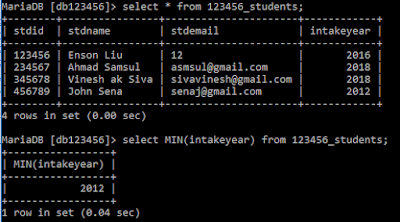- Connect MySQL using PHP.
- Retrieve and display data from MySQL using PHP and HTML.
- Input Data to MySQL using PHP and HTML form.
Instructions:
- This lab is based-on the students table from the previous lab.
- Download the slides from the link(updated).
- Perform all the exercises in the slides
* The previous slides have some issue on the database connection slides. Please update your slide to the latest one.
*Slides 23 updated on 28 Nov 2017, the method for the form is changed from "post" to "get". This will overcome the error for later lab exercise.
*Slides 23 updated on 28 Nov 2017, the method for the form is changed from "post" to "get". This will overcome the error for later lab exercise.




